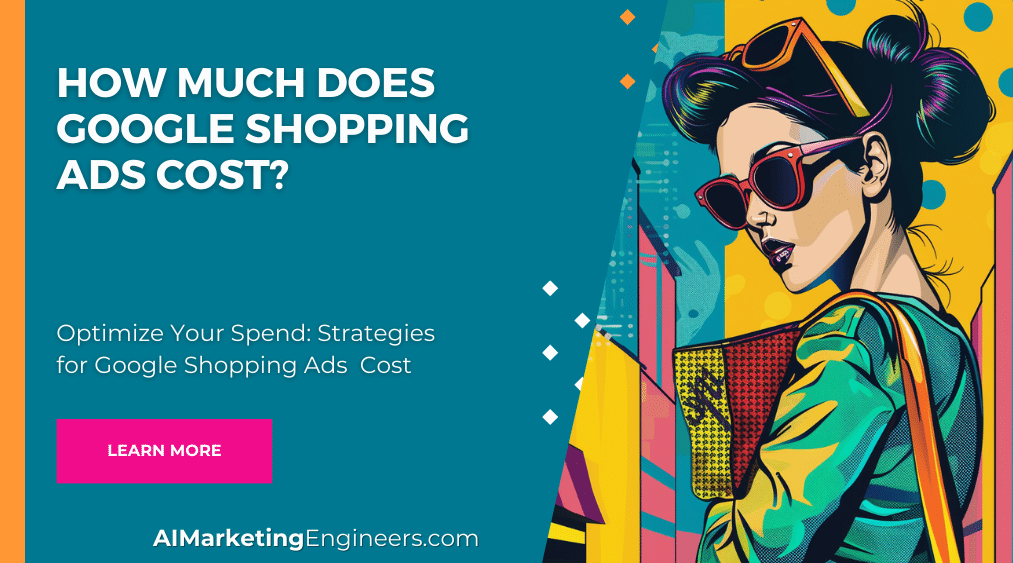Key Takeaways
✅ Variable Costs: Google Shopping ad costs are not standardized; they fluctuate based on competitive bids, product category, and market demand, allowing for flexibility in advertising budgets.
✅ Optimization Matters: The better you optimize your Google Shopping campaigns, focusing on factors such as product feed quality and targeted keywords, the more you can potentially lower your costs while maximizing ad performance.
✅ Strategic Bidding: Employing intelligent bidding strategies, like enhancing bids for high-performing products or adjusting bids according to the customer’s device, time of day, or location, can lead to a more efficient allocation of your advertising budget and improved ad efficacy.
Introduction
Are you eager to see your online sales skyrocket? Google Shopping ads might just be the secret ingredient you're missing! However, before diving into this exciting adventure, it's crucial to understand the costs involved. In this easy-to-follow guide, we uncover the mysteries of Google Shopping ads pricing! From the basics of getting started to savvy strategies influencing your final bill, we'll break down everything you need to know. Say goodbye to budget uncertainties and hello to harnessing the full power of Google Shopping ads for your e-commerce success!
Understanding Google Shopping Ads Cost Structure
Google Shopping Ads operate on a cost-per-click (CPC) model, which means that advertisers pay a fee each time someone clicks on their ad. There is no one-size-fits-all answer to how much Google Shopping ads cost because prices are determined by a variety of factors in a real-time auction.
Factors That Influence Google Shopping Ad Costs
- Bid Amount: Advertisers set maximum bids on their ad campaigns, indicating the highest amount they are willing to pay for a click.
- Product Category: Some product categories are more competitive, leading to higher ad costs.
- Quality of Ad: Google considers the relevance and quality of ads. Higher-quality ads might cost less and get better positioning.
- Seasonality: During peak shopping times like holidays, CPC may increase due to higher competition.
- Targeting Settings: Costs can vary depending on geographical targeting, device targeting, and other ad settings.
Average Costs of Google Shopping Ads
Although the cost for Google Shopping ads can fluctuate widely, it's helpful to recognize industry benchmarks for an indication of what one might expect to spend:
- Average CPC: The average cost-per-click can range from a few cents to several dollars. However, most small to medium-sized businesses might see average CPCs around $0.66, as per historical industry data.
- Competition in Auction: In high-competition categories or markets, CPCs can escalate significantly.
Managing Your Google Shopping Ads Cost
- Set a Budget: Define a daily or monthly budget to ensure you don't overspend. Google will stop showing your ads once your budget is depleted.
- Bid Strategically: Start with conservative bids, then adjust based on performance data.
- Use Smart Bidding: Google’s Smart Bidding can automate bid adjustments for better performance and cost efficiency.
Monitoring Performance and Adjusting Campaigns
To optimize costs and performance:
- Track Conversions: Understanding which ads lead to sales helps in allocating budgets effectively.
- Adjust Bids on Top-Performing Products: Increase bids on items that convert well to maximize ROI.
- Eliminate Underperforming Ads: Lower bids or pause ads for products that do not perform.
- Refine Targeting: Improve your targeting by using data like customer search queries and geography.
Leveraging Analytics for Cost-Effective Campaigns
- Use Google Analytics: Link your Google Ads account with Google Analytics to gain deeper insights into ad performance.
- Analyze Shopping Behavior: Track which products are being viewed, added to the cart, and purchased.
- Keyword Optimization: Regularly optimize product titles and descriptions to ensure they match popular search queries.
Since the cost of Google Shopping ads can vary widely due to the auction-based bidding system, it's crucial for advertisers to actively manage and adjust their campaigns according to performance data. By understanding contributing factors to ad costs, setting a budget, and utilizing analytics, advertisers can control costs and maximize the return on their Google Shopping ads investment.
AI Marketing Engineers Recommendation
The cost of Google Shopping ads can vary widely based on several factors. Understanding how Google Shopping works is crucial to get a sense of the potential cost. When setting up Google Shopping ads, advertisers bid on the cost-per-click (CPC) for their products. This means you'll pay each time a user clicks on your ad. It's a competitive auction-based system, and the cost will therefore depend on competition within your specific product category and market.
Given the variability, here are crucial points to consider when budgeting for Google Shopping ads:
1. Average Cost-per-Click (CPC): Research has shown that the average CPC for Google Shopping ads can range from $0.66 to $1.00. However, this is a broad average and the actual CPC can fluctuate significantly based on the niche.
2. Product Category: The cost can differ by product category. High-competition categories or high-value items might have a higher CPC because the potential return on investment (ROI) is greater, driving more competition among advertisers.
3. Quality of Your Product Feed: Google Shopping relies on a product feed from your website. The better optimized and high-quality your feed is, the more likely you'll win the bid at a lower cost. Ensure your product titles, descriptions, and images are clear and relevant.
4. Bid Strategy: You can choose manual bidding to set maximum CPC bids for specific items, or you can rely on Google's automated bidding strategies to maximize conversions or value. Automated strategies may help you get a better ROI but might initially be more expensive as Google's algorithms learn which ads perform best.
5. Target ROAS (Return on Ad Spend): Defining a target ROAS is critical for budgeting. If you know the margin you make on products, you can set a target ROAS that will ensure profitability after advertising costs.
6. Seasonality and Sales Cycles: During peak shopping seasons like the holidays, costs can rise due to increased competition. Adjust your budget to accommodate these fluctuations.
Actionable recommendations
- Start Small: If you're new to Google Shopping ads, start with a small budget to test which products perform well and refine your approach based on early data.
- Use Data Analytics: Monitor your campaigns closely and use analytics to understand which products and ads are performing best. Use this information to reallocate your budget effectively.
- Optimize Your Feed: Regularly update and optimize your product feed for the best performance. Use high-quality images and detailed product descriptions.
- Experiment: Try different bidding strategies, targeting options, and ad formats to find what gives you the best results for the lowest cost.
- Track Everything: Utilize conversion tracking to understand how your ads lead to sales. Knowing your numbers (CPC, CTR, conversion rate, profit margin) is essential to managing your campaigns effectively.
Conclusion
Google Shopping ads offer a dynamic and effective platform for e-commerce merchants to showcase their products directly to interested consumers. The costs associated with these ads are not fixed; they’re influenced by a variety of factors, including product categories, the competitiveness of the market, the quality of the ads, and the bidding strategy of the businesses.
The pay-per-click model ensures that you pay only for the actual traffic to your site, making it a cost-effective solution for many. Understanding these variables and how to optimize your ad campaigns can lead to a more successful and profitable advertising experience on Google Shopping.
FAQs
Question 1: What is SEM?
Answer: SEM stands for Search Engine Marketing, which is a digital marketing strategy used to increase the visibility of a website in search engine results pages (SERPs). Typically, it involves paid advertising through services such as Google Ads, where advertisers bid on keywords that users of services such as Google might enter when looking for certain products or services.
Question 2: How much does Google Shopping cost?
Answer: Google Shopping charges depending on a few different factors. One fee is to list your products on the Google Shopping platform, which is a flat fee. Then, there are fees based on clicks and impressions (how many people see your ad). These fees are determined by an auction system, where advertisers bid on different keywords and shopping campaigns.
Question 3: How is the cost of Google Shopping ads determined?
Answer: The cost of Google Shopping ads is determined by a bidding system, where advertisers bid on different keywords and shopping campaigns. The exact cost can vary depending on the competition for those keywords, as well as other factors such as the quality of the ad, the relevance of the ad to the search query, and the bid strategy you are using.
Question 4: How can I control the cost of my Google Shopping ads?
Answer: You can control the cost of your Google Shopping ads by setting your bids, optimizing your product listing, and using targeting options to reach the right customers. You can also monitor and adjust your budget, as well as use tools like real-time bidding and auction insights to refine your strategy.
Question 5: What is the difference between CPC and CPM bidding for Google Shopping ads?
Answer: CPC (cost per click) and CPM (cost per thousand impressions) are two different types of bidding options used for Google Shopping. CPC bidding means you pay per click on your ad, while CPM bidding means you pay per thousand impressions of your ad. CPC bidding can be more expensive but is also more immediate and can lead to more conversions, whereas CPM bidding is less expensive but may not be as effective at generating immediate results.













